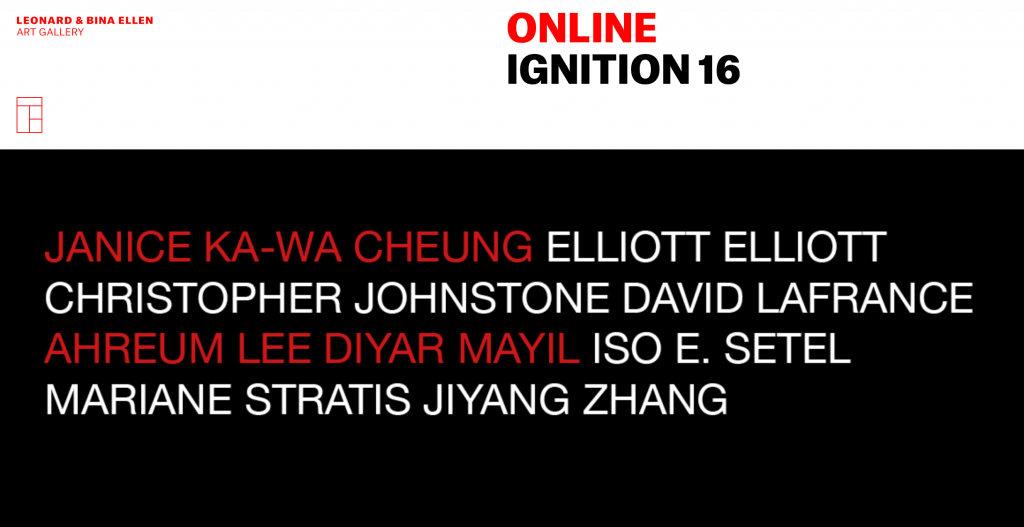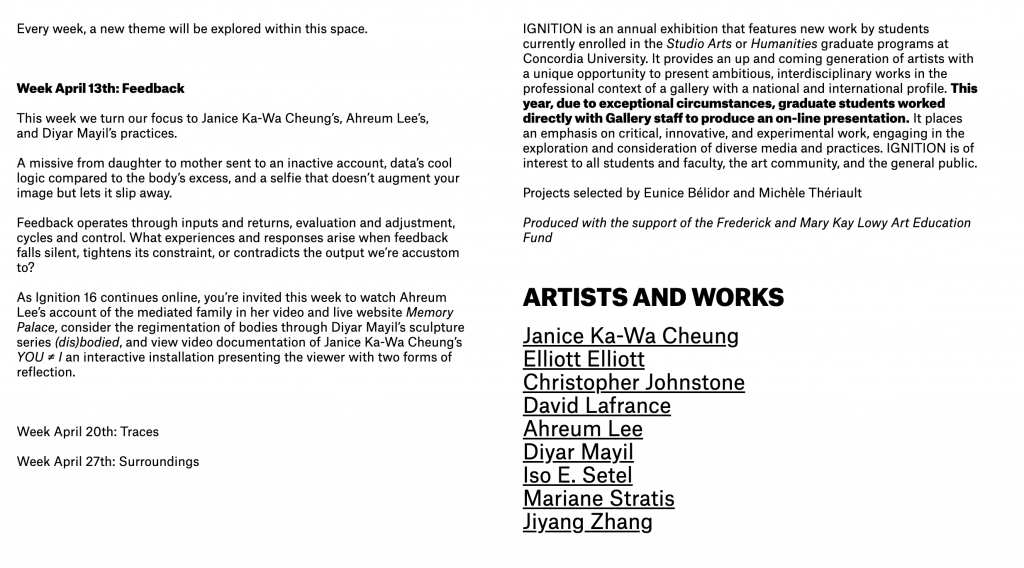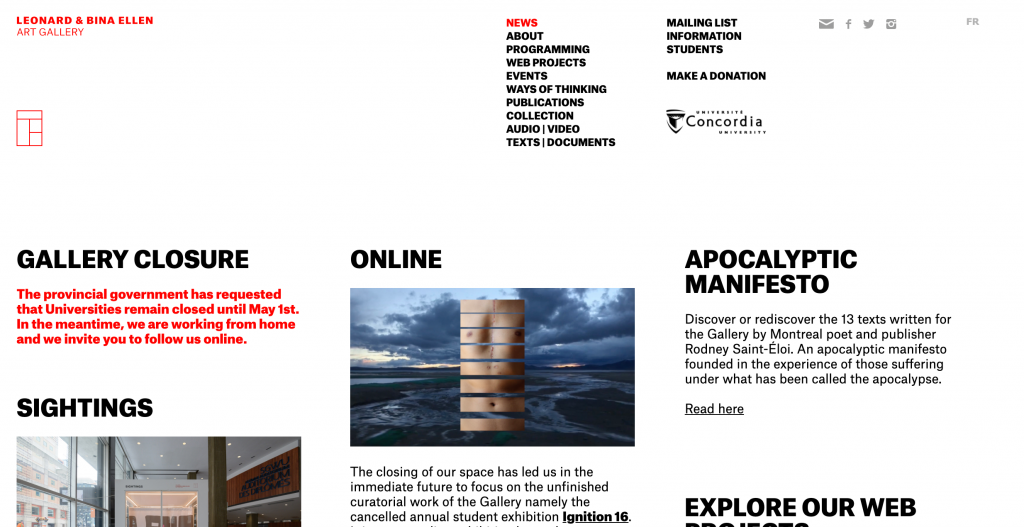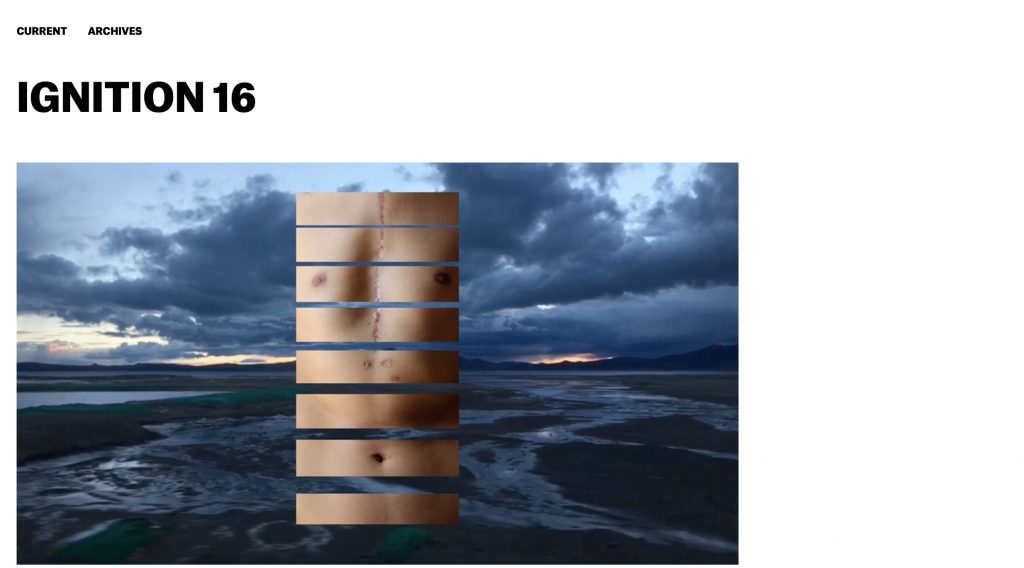What can we learn from the first wave of virtual exhibitions?
With online exhibitions and art events on the rise, a new standard for criticism is sure to follow. Simple photo galleries aren’t cutting it: viewers want more engagement, something new and cutting edge that really takes advantage of the internet’s wide range of artistic possibilities. Tim Schneider, art business Editor at ArtNet, listed four key components to creating effective online viewing rooms in a recent article:
| 1. Distinguishing the viewing room from regular online shops by including links to artist statements, portfolios and more 2. thinking outside of the white cube and allowing for a rotation of artworks that would create new dialogues and opportunities for solo shows 3. controlling the accessibility of the viewing room by offering options to sign up for newsletters, donate money, or purchase an artwork 4. promoting the viewing room on other online platforms, allowing opportunities for public engagement ex-situ, and opening the floor for conversation on video chattings apps |
Concordia’s Leonard & Bina Ellen Art Gallery, located in the LB building, has recently made the switch to online programming for their final exhibition of the year, Ignition 16. Ignition is an annual exhibition featuring the work of graduating masters students from Concordia’s Faculty of Fine Arts.
The gallery has opted for a weekly turnover, featuring select artworks from the exhibition in line with a specific theme. The week of April 13 focused on the idea of feedback, spotlighting three of the featured artists. Their programming asks viewers, “what experiences and responses arise when feedback falls silent, tightens its constraint, or contradicts the output we’re accustomed to?”
During the exhibition, members of the virtual public were invited to watch Ahreum Lee’s Memory Palace, an autobiographical account of the intersections between politics, technology, the immigrant experience and family, to consider society’s control of bodies through Diyar Mayil’s sculptural series (dis)bodied, and to view documentation of Janice Ka-Wa Cheung’s YOU ≠ I, an interactive installation exploring digital narcissism and the uncanny within the everyday.
The gallery’s website isn’t very obvious to navigate, and it takes some sporadic clicking around before you can make it off the homepage. Once you find your way to the programming, you are met with three columns of bold text, and it is within the middle of one of these columns that you will finally reach the online exhibition. In and of itself, the online exhibition doesn’t seem any different from the gallery’s usual webpages for in-person exhibitions.
The feature image on the Ignition 16 page has no context either, although I presume it features the artist’s works—but whose, exactly? The page is divided into two wide columns, one containing a breakdown of the week’s themes (upon my visit on April 17, only the description for the week of April 13 was available), and the other containing the curatorial statement and a list of the artists.
It is only in this second column that the works are accessible to viewers. Each artist section contains a description of their practice, a statement for the selected work, questions to spark further exploration, and links to further information (usually the artist’s own website).
While some of the ideas brought up under the “explore” subheading are quite relevant in this time of social and physical distancing, unless you are going to write about the works or plan to ponder the gallery’s questions in the intellectual corner of your home with a lovely beverage, these questions do not really promote active engagement. I am left wanting more, wanting full screen viewing, not a window with 15 tabs open for me to click through and eventually get overwhelmed and bored by. These artists had their graduating exhibition cancelled, so they deserve full screen gallery representation.
Among the nine artists, the best received works were the video pieces, hyperlinked on the Gallery’s webpage via Vimeo. It’s evident why that is: audio-visual work thrives online. It’s incredibly accessible, and anyone can view it in it’s intended quality when following the right link. Interactive pieces shared through documentation are a close second, especially when viewers are granted insider access to the artist’s process. Although I’m sure the work could have been designed in another way, with the specific purpose to be interacted with online and under the current circumstances, it’s understandable why it isn’t.
These are trying times we’re living through, and we are all learning as we go and doing the best with what we’ve got. This experience has left me wondering what we can learn from the first wave of virtual exhibitions. How can we better them for future renditions? How can we include this kind of digitally-accessible content in everyday museum and gallery programming as the pandemic blows over?
Share your thoughts with us @TheConcordian on Twitter, Instagram and Facebook.
PS, we are hiring for the 2020-2021 academic year! For more information visit theconcordian.com/work-with-us/.
Feature image courtesy of the Leonard and Bina Art Gallery. Gif includes the works of Ahreum Lee, Memory Palace, 2019-2020, Christopher Johnstone, Five Acres, 2020, Diyar Mayil, Leaky Pants, 2018 and Janice Ka-Wa Cheung, YOU ≠ I, 2019.








